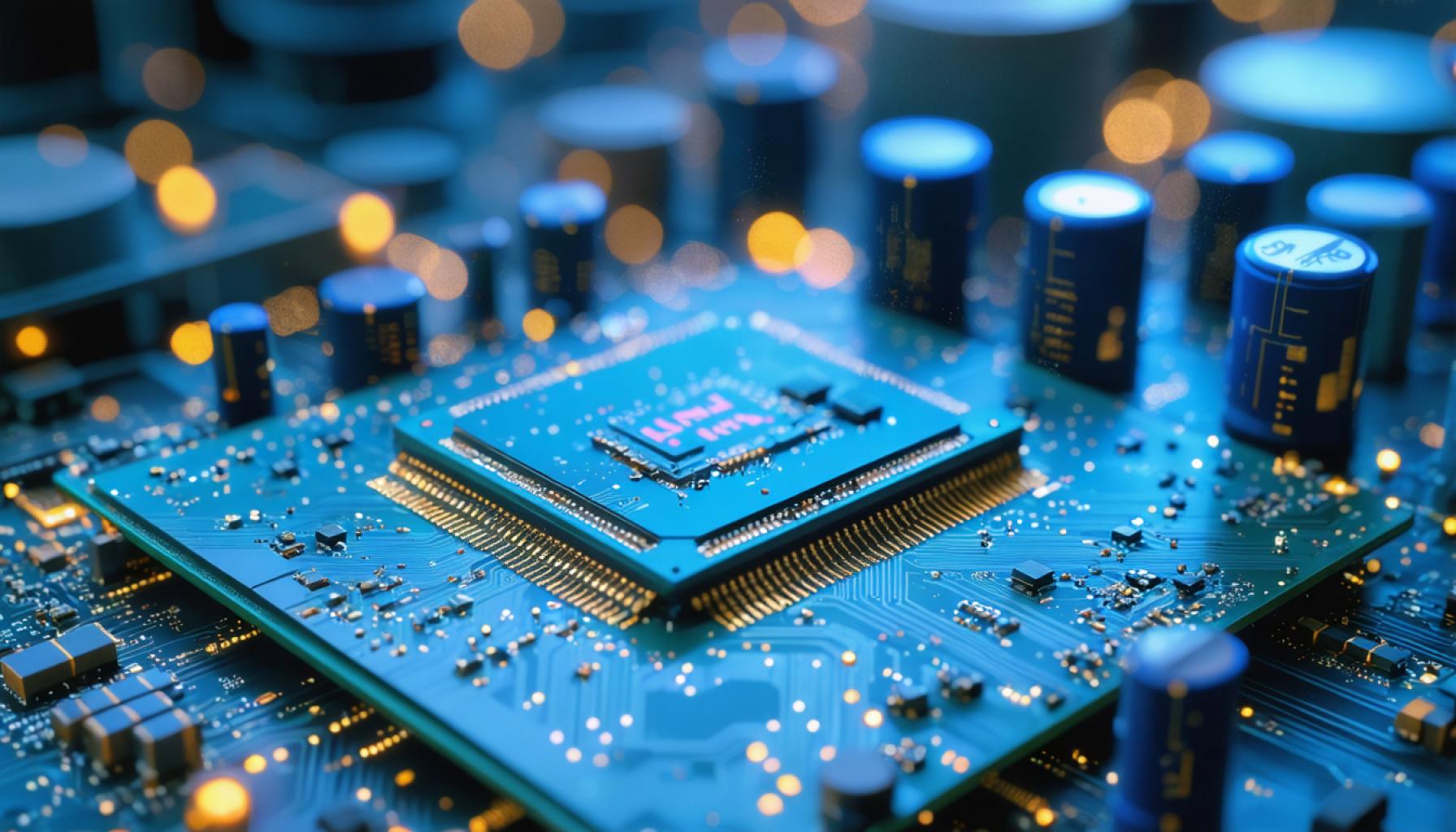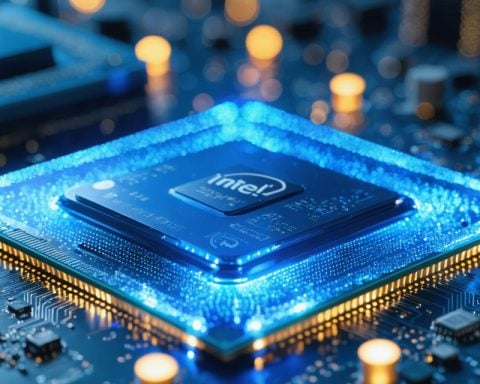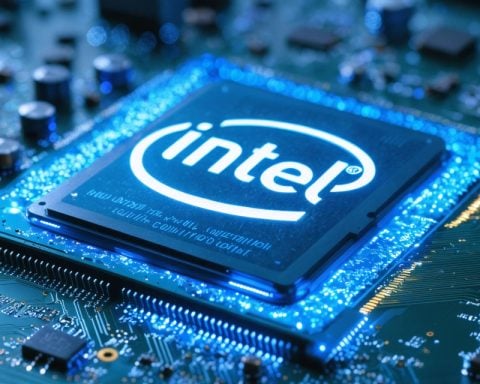- Lam Research introduces revolutionary technologies in AI chip manufacturing with the Akara and ALTUS Halo tools.
- The Akara plasma etch tool offers precise 3D chip structuring, enhancing next-gen transistors and DRAM devices for advanced AI applications.
- The ALTUS Halo tool enables high-precision, void-free semiconductor production, boosting AI, cloud computing, and smart device performance.
- Major NAND and logic chip manufacturers rapidly adopt these tools, highlighting their transformative potential in the semiconductor industry.
- Lam Research aims for significant financial growth, targeting revenues between $25 billion and $28 billion by 2028.
- Commitment to global tech advancement includes a $1.2 billion investment in India’s semiconductor sector.
Lam Research has once again captivated the semiconductor world, unveiling groundbreaking technologies that promise to revolutionize AI chip manufacturing while projecting ambitious financial gains. With the introduction of two advanced tools, Lam Research positions itself at the forefront of this rapidly evolving industry.
The launch of Akara, a cutting-edge plasma etch tool, promises unparalleled precision in creating 3D chip structures. This innovation supports the scaling of next-generation transistors and DRAM devices, paving the way for more sophisticated AI capabilities. Imagine a future where intricate chip architectures emerge with the delicacy and detail of a master artisan at work.
Meanwhile, the ALTUS Halo tool emerges as a beacon of innovation in the realm of molybdenum metallization. By enabling high-precision, void-free semiconductor production, ALTUS Halo could usher in an era of superior AI, cloud computing, and smart device performance. Like a master conductor leading a symphony, this tool harmonizes the elements to produce semiconductors of unmatched quality.
Demand for these pioneering tools is already surging among major NAND and logic chip manufacturers. The early adoption by industry giants underscores the transformative potential of Lam’s innovations, setting the stage for further breakthroughs in AI technology.
As Lam Research charts a course towards a promising financial horizon—aiming for revenues between $25 billion and $28 billion by 2028—its commitment to global semiconductor advancement remains clear. With significant investments like the $1.2 billion pledge to India’s semiconductor landscape, Lam underscores its vision of a connected, technologically advanced future.
In this tale of innovation and aspiration, Lam Research’s transformative tools lay the groundwork for an era of smarter AI, driven by unprecedented chipmaking prowess.
Unlocking the Future: How Lam Research’s Cutting-Edge Tools Are Shaping AI Chip Manufacturing
How-To Steps & Life Hacks: Maximizing Benefits from Akara and ALTUS Halo
Utilizing Akara for 3D Chip Structures:
1. Equipment Setup: Ensure that the Akara plasma etch tool is calibrated according to the material specifications of your substrate.
2. Precision Alignment: Use high-resolution alignment systems to precisely position your wafers within the tool to maximize the accuracy of 3D structures.
3. Process Monitoring: Implement continuous in-situ monitoring to dynamically adjust etching parameters for optimal outcomes.
Enhancing Production with ALTUS Halo:
1. Material Preparation: Carefully prepare molybdenum and any substrate surfaces to ensure adhesion and reduce contamination risk.
2. Layer Deposition: Utilize the tool’s capabilities to achieve uniform layers by adjusting temperature and pressure settings, designed to avoid void formations.
3. Quality Control: Apply non-destructive testing techniques to verify void-free and stress-free results post-deposition.
Real-World Use Cases
– AI Neural Networks: The precision offered by Akara facilitates more complex neural network chips, vital for advanced AI and machine learning models.
– High-Performance Computing: ALTUS Halo’s metallization enables improvements in power efficiency and speed, critical for data centers and cloud computing giants.
Market Forecasts & Industry Trends
– According to MarketWatch, the semiconductor fabrication equipment market is projected to grow significantly, with Lam Research poised to capture a substantial share due to its innovative offerings.
– The demand for transistors and DRAM devices is expected to rise sharply, driven by applications in AI, IoT, and 5G technologies.
Reviews & Comparisons
– Customer Feedback: Early adopters highlight Akara’s unmatched etching precision that leads to higher yield rates.
– Competitor Comparison: Compared to competitors like Applied Materials, Lam’s tools offer superior metallization processes crucial for cutting-edge semiconductor devices.
Controversies & Limitations
– High Cost: Initial investment for these tools is significant; however, they promise a high ROI due to their efficiency and outcome quality.
– Operational Complexity: Operators require specialized training to manage the sophisticated processes uniquely found in Akara and ALTUS Halo.
Features, Specs & Pricing
– Akara:
– Feature: Plasma etching with nanometer precision.
– Spec: Supports scaling of next-gen 3D transistors.
– Pricing: Variable based on configuration, estimated starting from several million USD.
– ALTUS Halo:
– Feature: High-precision molybdenum metallization.
– Spec: Ensures void-free semiconductor production.
– Pricing: Customizable, with quotes available on request.
Security & Sustainability
– Eco-Friendly Designs: Both tools are engineered to minimize waste and energy consumption, supporting sustainable manufacturing processes.
– Data Security: Enhanced security features ensure intellectual property protection during sensitive manufacturing processes.
Insights & Predictions
– Analysts predict that Lam Research’s innovations will become industry benchmarks, with broader applications in AI-driven technologies coming to the forefront over the next five years.
Tutorials & Compatibility
– Akara and ALTUS Halo are compatible with mainstream manufacturing workflows, promising faster integration with existing fabrication lines.
– Training programs provided by Lam enable seamless transition and operational use.
Pros & Cons Overview
Pros:
– High-precision results
– Industry-leading innovation
– Ample support for AI and IoT markets
Cons:
– High upfront cost
– Requires specialized training
Actionable Recommendations
– Investment Planning: Semiconductor manufacturers should consider the long-term benefits of investing in Akara and ALTUS Halo to stay competitive.
– Training Initiatives: Engage in comprehensive operator training programs offered by Lam to maximize tool efficacy and production quality.
For more information, visit LAM Research.
These tools not only redefine semiconductor fabrication but also propel the AI industry into a new era of capabilities and possibilities. Adopting these technologies could be transformational for businesses looking to maintain a competitive edge in the fast-evolving semiconductor market.




















